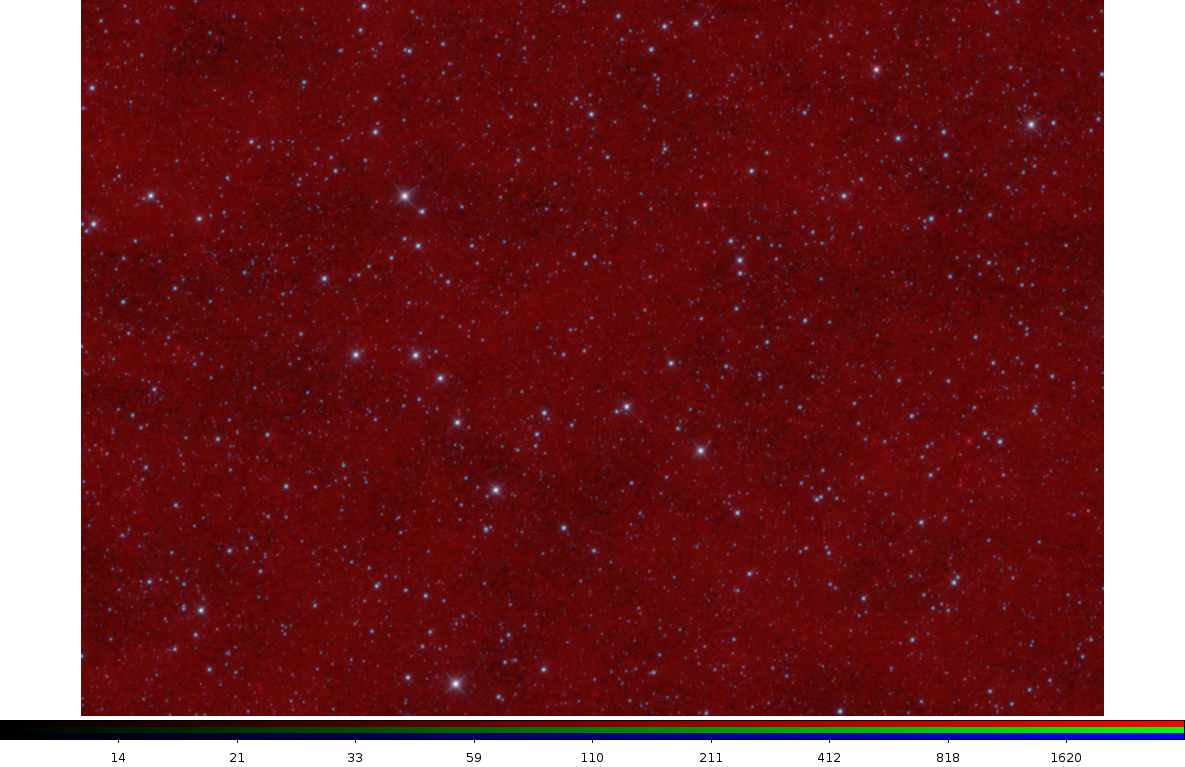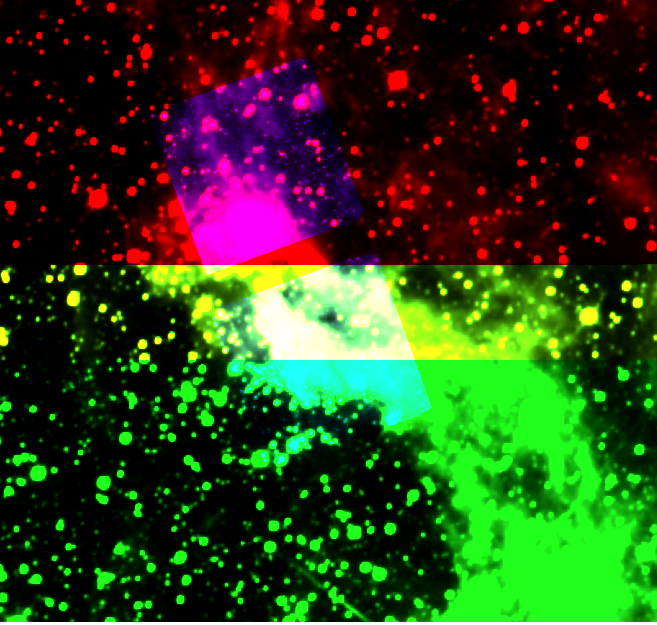C-WAYS: follow the bouncing target selection
OK, so at the AAS we talked about LDN 1548 as a viable option. It had, we thought, good potential for yielding new young stars, it was (in projected distance) near Taurus, it has the potential for being actually related to the Taurus Molecular Cloud (and thus of scientific interest). It also has SDSS data in the archive, so that's a strong plus -- more data will help us weed out the contaminants.
BUT.
I just went and got the whole WISE tile. It's REALLY diffuse star formation, MUCH worse than I remembered. I mean, bad enough that I went and checked the coordinates. More than once. This is what I see. There is not a lot here, and there is going to be a TON of contamination: 
I've gone back to my Taurus collaborators to figure out why we thought there was something interesting there.
But that probably drops us back at the beginning in terms of target selection, sigh. Sorry. But, this is real science, and I (honest-to-God) do NOT know the answer before we get into this. This is the real thing, folks.
The approach we talked about will be the same; we just need to find a better target.
So.
I decided to go resurrect some of the other regions that were under consideration. They were:
- LDN 1548- really diffuse and un-dramatic in WISE. sigh.
- "north of LDN 1509" -- Wilson had that in his poster, and that too is really diffuse star formation, so contamination is going to be high. But at least likely to yield more YSO candidates than LDN 1548 as far as I can tell. ON the other hand, Wilson wants to do that region! :)
- NGC 1579 -- still near (in projected distance) to Taurus - see fig 2 in the Taurus paper. It has high nebulosity in parts. There are famous objects here. Spitzer data too. A friend has an AAS abstract from 2007 claiming results with Apitzer, but there is no paper from it. I don't want to scoop him. Also potentially complicated data reduction. Probably not a good target.
- Continuing the BRC27/34 work begun by the 2011 team. BRC 34 is not in the data that are public right now, but BRC 27 is, and it is also part of a region of star formation in CMa that another friend was thinking about working on, but was willing to let it go. I don't think that you guys could handle the huge multi-degree span (read: millions of sources) that this thing really covers, but maybe working just around BRC 27, and BRC 34 since it will be available in March, is tractable? It is nice to have Spitzer for comparison (for a lesson in spatial resolution). BRC 27 is right on the border between two WISE tiles, so I can't make a pretty 3-color image for you. You kind of have to trust me ('cause you know, I've been so good at that so far) that this is an interesting region. IN this image, I did red as one WISE tile, green as the other WISE tile, and blue as the Spitzer data. You can see that the cloud clearly extends beyond the Spitzer boundaries. We'd have to decide how far out to go.
